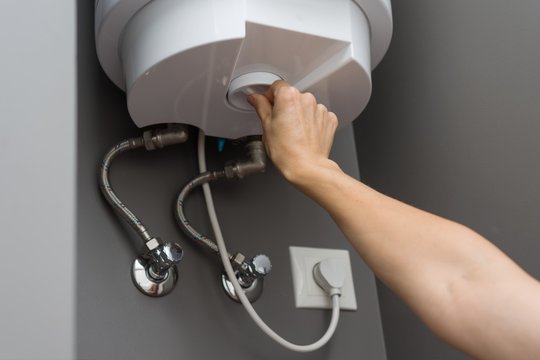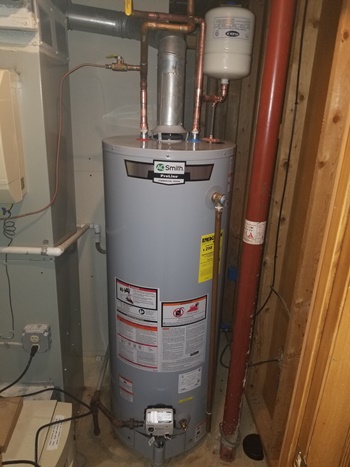Simple Methods to Care for Your Home's Hot Water System Properly
Simple Methods to Care for Your Home's Hot Water System Properly
Blog Article
This post following next in relation to Tips on Maintaining a Water Heater is extremely engaging. Read it yourself and decide what you think about it.

Hot water is essential for daily convenience, whether it's for a revitalizing shower or cleaning recipes. To guarantee your hot water system runs effectively and lasts much longer, routine upkeep is vital. This write-up offers practical pointers and understandings on exactly how to preserve your home's hot water system to avoid disruptions and pricey repair services.
Introduction
Maintaining your home's hot water system could appear complicated, however with a few straightforward actions, you can ensure it operates efficiently for several years ahead. This overview covers every little thing from comprehending your hot water system to DIY maintenance tips and knowing when to call in specialist aid.
Relevance of Preserving Your Hot Water System
Routine maintenance not just expands the life-span of your hot water system but additionally guarantees it runs effectively. Overlooking upkeep can cause reduced efficiency, greater power expenses, and even premature failing of the system.
Indications Your Hot Water System Needs Upkeep
Understanding when your hot water system needs focus can stop major issues. Keep an eye out for indicators such as inconsistent water temperature, weird sounds from the heating unit, or rusty water.
Recognizing Your Hot Water System
Prior to diving into upkeep tasks, it's helpful to comprehend the basic elements of your warm water system. Usually, this includes the water heater itself, pipelines, anode rods, and temperature level controls.
Monthly Upkeep Tasks
Regular regular monthly checks can help catch small issues prior to they escalate.
Flushing the Hot Water Heater
Flushing your hot water heater removes sediment build-up, enhancing efficiency and lengthening its life.
Checking and Changing Anode Rods
Anode rods protect against rust inside the tank. Checking and changing them when worn is crucial.
Inspecting and Readjusting Temperature Setups
Adjusting the temperature level settings makes sure optimal efficiency and safety.
Do It Yourself Tips for Maintenance
You can do several maintenance jobs yourself to maintain your warm water system in top condition.
Looking for Leakages
Routinely check pipelines and links for leaks, as these can result in water damages and greater costs.
Testing Pressure Relief Valves
Evaluating the stress safety valve guarantees it functions correctly and stops too much stress build-up.
Insulating Pipes
Protecting hot water pipelines decreases warm loss and can save energy.
When to Call a Specialist
While do it yourself maintenance is helpful, some concerns require expert experience.
Facility Issues Needing Specialist Help
Examples include major leakages, electric problems, or if your water heater is constantly underperforming.
Regular Professional Maintenance Perks
Specialist upkeep can include extensive evaluations, tune-ups, and making sure conformity with safety and security criteria.
Conclusion
Regular maintenance of your home's hot water system is vital for performance, long life, and price savings. By following these tips and understanding when to seek expert assistance, you can make sure a trustworthy supply of warm water without unanticipated disturbances.
How to Maintain an Instant Hot Water Heater
Before tinkering with your hot water heater, make sure that it’s not powered on. You also have to turn off the main circuit breaker and shut off the main gas line to prevent accidents. Also turn off the water valves connected to your unit to prevent water from flowing into and out of the appliance. 2. When you’re done, you have to detach the purge valves’ caps. These look like the letter “T†and are situated on either side of the water valves. Doing so will release any pressure that has accumulated inside the valves while at the same time avoid hot water from shooting out and burning your skin. 3. When the purge valves’ caps are removed, you have to connect your hosing lines to the valves. Your unit should have come with three hoses but if it didn’t, you can purchase these things from any hardware or home repair shops. You can also get them from retail stores that sell water heating systems. Read the user’s manual and follow it to complete this task properly. When the hosing lines are connected, open the purge port’s valves. 4. You should never use harsh chemical cleaners or solutions when cleaning your unit. Make use of white vinegar instead. It should be undiluted and you’ll probably use about 2 gallons. 5. Now flush your water heater. This task should probably take about 40 minutes. We can’t give you specific directions for this because the procedure is carried out depending on the type, model and brand of your heater. With that being said, refer to the user’s manual. 6. When you’re done draining the unit, you have to turn off the purge port valves again. Remove the hosing lines that you earlier installed on each of the water valves. Put the valve caps (purge port) back in their respective places and be very careful so as not to damage the rubber discs that are found inside these caps. 7. Now that everything’s back in place, check your user’s manual again to find out how to reactivate your water heating system. 8. Once it is working, turn one of your hot water faucets on just to let air pass through the heater’s water supply pipes. Leave the tap on until water flows smoothly out of it. https://www.orrplumbing.com/blog/2014/september/how-to-maintain-an-instant-hot-water-heater/

I hope you liked our post on Tips For Maintaining Your Hot Water Heater. Thanks a lot for finding the time to browse our article post. Sharing is good. Helping others is fun. I cherish your readership.
Hire A Pro Report this page